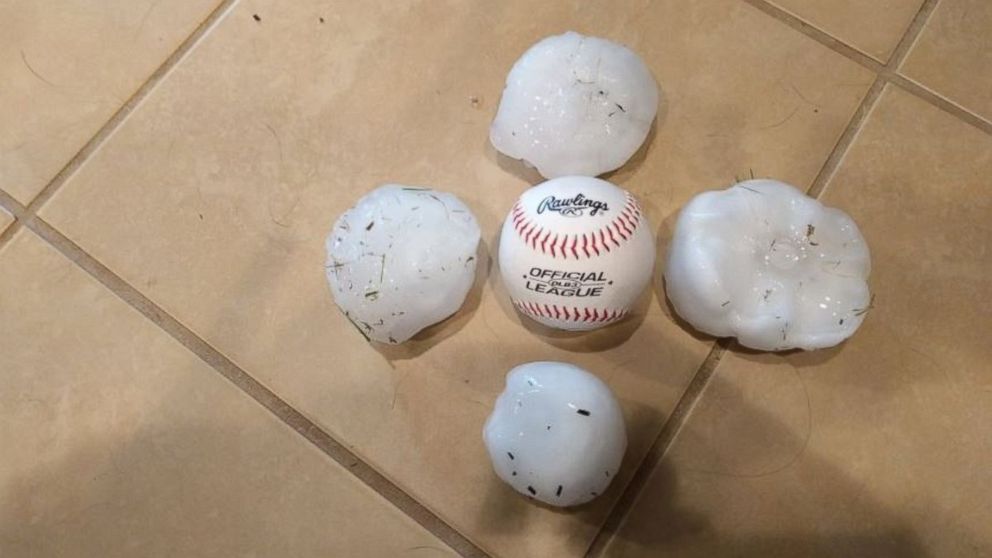 City Journal has an article about hailstorm lawsuits in Texas. Hailstorms are a serious problem in Texas—you have golfball sized hail? Texas has regulation baseball-sized hail.
City Journal has an article about hailstorm lawsuits in Texas. Hailstorms are a serious problem in Texas—you have golfball sized hail? Texas has regulation baseball-sized hail.
Hailstorms are, of course, an Act of God, but trial lawyers can always find someone to sue—usually an insurance company.
Most homeowners correctly assume that as long as their roof doesn’t leak and isn’t visibly compromised, it is undamaged, and decline to make a claim following a hail storm. Or sometimes homeowners submit a claim and receive payment for a roof repair. But when a solicitor knocks on the door weeks or months following a storm and promises to obtain a brand new roof (and possibly also a new fence, patio, and exterior windows), at the insurer’s expense, many policyholders are tempted by the potential windfall—even if they have already submitted a claim that has been paid. Texas law doesn’t permit insurers to obtain a release when a claim is settled.
 Why do the lawyers get away with that in Texas, which has a stronger culture of personal responsibility than, say, Massachusetts? Well, in the Rio Grande Valley, they have some problems with local juries:
Why do the lawyers get away with that in Texas, which has a stronger culture of personal responsibility than, say, Massachusetts? Well, in the Rio Grande Valley, they have some problems with local juries:
This has been a bonanza for shady roofers, “public adjusters,” and the contingent-fee lawyers who pocket 33 percent to 40 percent of the recovery for filing a cookie-cutter lawsuit and performing little work. Texas attorneys have earned an estimated $800 million in fees from property-damage lawsuits in recent years. This scam works best in areas of the state, such as the Rio Grande Valley (labeled a “judicial hellhole” by the American Tort Reform Association), where residents are poor, uneducated, and inclined to rule against corporate defendants in a jury trial. In fact, a severe hail storm in McAllen in 2012 led to a deluge of lawsuits in Hidalgo County—11,000 to date. In 2014 and 2015, a total of 2,616 hail damage lawsuits were filed in Webb County (encompassing Laredo); just 124 hail lawsuits were filed there between 2006 and 2013. A hail storm in sparsely populated Amarillo in 2013 has resulted in more than 1,300 lawsuits in Potter County. Wherever it hails in Texas, thousands of lawsuits are now certain to follow.
All Hail Breaks Loose | Storm-related lawsuits are wreaking havoc in Texas, by Mark Pulliam, December 15, 2016
What can we say about Rio Grande Valley juries—aside from the fact, as Pulliam says above, that they're "poor, uneducated, and inclined to rule against corporate defendants"?
They're Hispanic, of course. According to Wikipedia, the Rio Grande Valley north of the border is mostly in
four Texan counties: Starr County, Hidalgo County, Willacy County, and Cameron County. As of January 1, 2012, the U.S. Census Bureau estimated the population of the Rio Grande Valley at 1,305,782.[3] According to the U.S. Census Bureau in 2008, 86 percent of Cameron County, 90 percent of Hidalgo County, 97 percent of Starr County, and 86 percent of Willacy County are Hispanic.
What's the political culture like in the Rio Grande Valley? Wikipedia puts it this way:
As of 2006, officeholders tend to be Democrat. It is common for voters to be influenced by members of their own extended families and by prominent families in their towns, so politicians often try to make friends with family groups to increase their chances of getting elected. As of 2006, about 20,000 to 30,000 people in Cameron County habitually vote in primary elections, and Presidential elections have higher turnouts. Politiqueras, women hired to help elderly people vote, are crucial in South Texas elections. Cecilia Ballí of Texas Monthly wrote that voters expect to get favors from politicians they vote for, and if they do not get these favors they become resentful of politicians as a whole.[11]
These are all American citizens—well, almost all—like Judge Curiel. Unlike Judge Curiel, they weren't born in Indiana, but in what some times seem like an outpost of Mexico.
Pulliam ends
To preserve the Texas Model that has made state prosperous and vibrant, legislators need to rein in the legal havoc caused by storm chasers. Lawmakers can’t change the weather, but they can curb the unnatural disaster that follows in its wake.
The Texas Model—of low regulation, a booming economy, and, as I said above, a culture of personal responsibility, depends on Texans being Texans—I.E. Americans, but slightly more so. It's not going to work with Tejanos, nor will the rest of America.